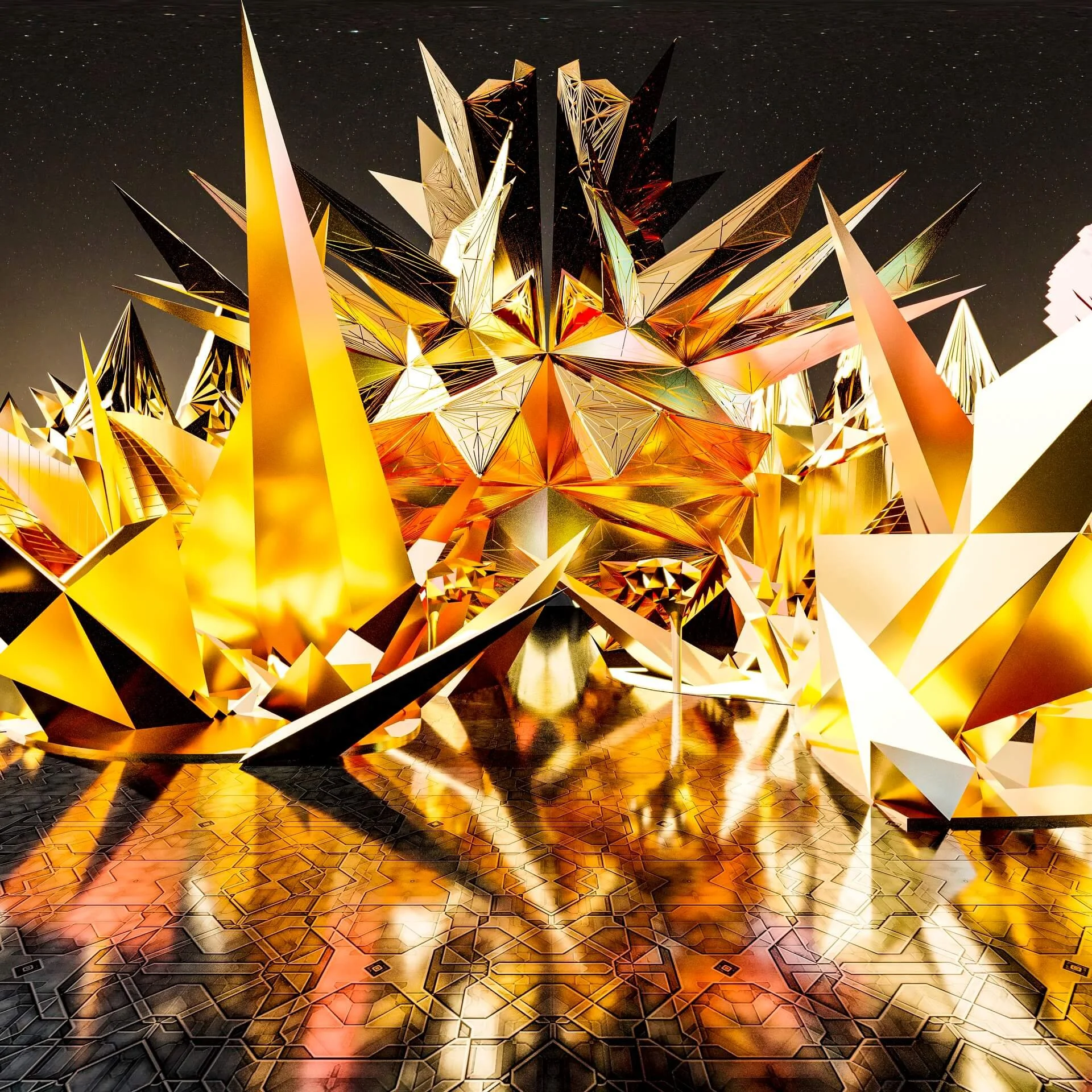How to Design a Building in the Metaverse: Spaces DAO Explores the Boundaries
A DAO to help architects and designers create the metaverse

Without the physical constraints of the real world, immersive designs in Decentraland and the Sandbox present new web3 opportunities for architects
While studying for her Master’s in architecture, Fatemeh Monfared submitted a business plan about designing buildings in the metaverse.
“Even though I wrote an amazing report, my professor gave me a really low grade,” she said with a laugh. “He couldn’t understand what I was talking about.”
Monfared learned about metaverse applications through attending blockchain summits in her home country of Spain. She created her first design on a Decentraland plot of land owned by a friend and loved the freedom of virtual design.
In school, she studied how to protect a building from wind, snow, and storms. Her designs must take into consideration electricity wiring and water piping, among hundreds of other factors.
“Those were the parts I did not really enjoy. The funnest part is designing, letting go and being free,” she said.
Monfared wrote her Master’s thesis on regenerating isolated and abandoned villages in Spain, but after graduation, she reverted to her plan.
A scene from the BlueBird project
She is now the co-founder of Spaces DAO, a collective of architects and artists that specializes in designing virtual real estate and 3-D modeling. Using the acronym for a decentralized autonomous organization, or DAO, in the name reflected the original vision where the collective of artists and designers worked together in a completely decentralized fashion.
“Soon after, we realized that it was very hard to manage with projects that have strict timelines,” she said. The DAO now refers to the ethos of the design studio and that it does not have an intentional hierarchy and grows as a community working together.
Designing for the Metaverse
Their first client was a private equity fund that wanted to pitch a metaverse music festival for the American rapper Jay-Z. The concept did not end up materializing, but the DAO delivered a stunning design for Decentraland.
The black and gold gate of the festival was inspired by the album cover of Watch the Throne, the 2010 hit by Jay-Z and Kanye West.
“In a virtual music festival, people would want to experience things they are not normally experiencing in the physical world,” she said. “They want to see things that are impossible.” So why not design an NFT virtual gallery in the middle of the arena made of water towers that defy the laws of physics?
In a different project, a Norwegian couple who collect NFTs wanted to create a virtual gallery in Sandbox, where they feature their favorite work. Since the couple came from an artistic background, they had a clearer vision of what they wanted.
The design of the gallery, named BlueBird, started with a sketch of a map of the gallery that was inspired by the style of the Russian painter Wassily Kandinsky.
A design for the Jay Z festival
Kandinsky was a pioneer in abstract art in the late 19th century and early 20th century. Many of his paintings explored the relationships between the fundamental elements of design, like squares and circles. Several contemporary artists have found Kandinsky’s work perfect for exploring and presenting in experimental forms. One artist deconstructed Several Circles, one of Kandinsky’s most famous paintings, and turned it into a VR experience. Some venues create immersive exhibitions of his work.
Over the map of BlueBird, buildings and 3-D objects were laid out to form the content of the gallery. Monfared explained that the buildings’ design was minimal and simple, reflecting Scandinavian aesthetics. The lighting and colors were inspired by James Turell, a contemporary American artist who is famous for immersive lights that explore the concepts of depth, perception and the psychological effects of color.
There are no established schools and concepts for architecture in the metaverse. They can only be described in comparison to the established traditions of the physical world. Monfared argues that this might change in the future.
“You can clearly see clear inspirations within metaverse creations, and many designers are pushing the boundaries and have their distinct styles,” she said.
Since there are no fears of bad weather in the metaverse, she likes building open structures that are accessible from different directions that are more welcoming to avatars and easier to navigate. She is currently working on an auditorium made of a semi-sphere levitating in mid-air.
“I think new metaverse [design] schools are being built as we speak,” she said.
Kandinsky’s Several Circles
The Future of the Business
Large metaverse companies like Decentraland and Sandbox offer users sophisticated tools to build what they want. With little to no knowledge of coding, amateurs can venture into designing objects in the metaverse, and the barriers to entry are almost non-existent.
Yet, many see the value of hiring professionals for the job.
“Architects have an understanding of how shapes and spaces interact and how we inhabit them,” Monfared said. “Architects bring a sense of creativity that goes beyond the vision of someone without such background.”
Moreover, there is always a need for professional technical skills when the physics of the real world does apply to the virtual world.
Some clients who create products care about interoperability so that they can feature their virtual clothes, for example, in a different environment. Other clients have limited plots of land in a mapped metaverse and one must design within the spatial confines.
Even for clients who are building isolated virtual experiences, like real estate companies creating digital twins for their properties, there are serious technical challenges.
“In the metaverse, we may not have the limitation of size, but we have the limitations of file size,” she said.
Traditional design computer files may reach two gigabytes each. Most virtual experiences are kept under 100 megabytes. It takes experience to optimize for the current state of computational power available to average.
Monfared argues that metaverse building is best done in cooperation between designers, architects, and video game developers- and many clients agree.
“Months ago, clients would come clueless, having only heard of the metaverse buzzword, and wanted help to get in there somehow,” she said. “Today we are getting clearer briefs and clients have clear visions of what they want to offer their customers.”
Monfared believes more companies realize that the websites of the web2 ecosystem are not going to be enough in the future. They want to claim their space in web3, which for Monfared is making metaverse design a lucrative career.
“The hype started in 2021, and it has been growing ever since,” she said.



